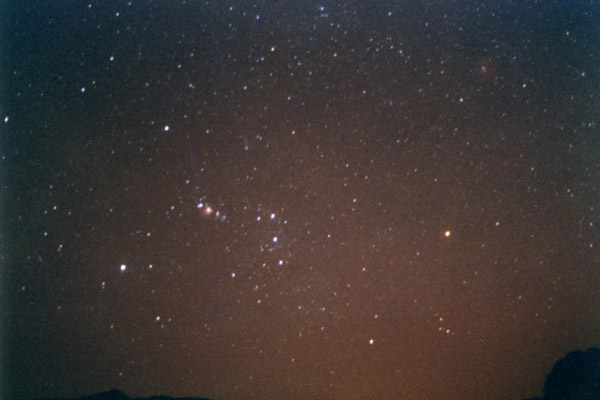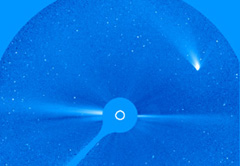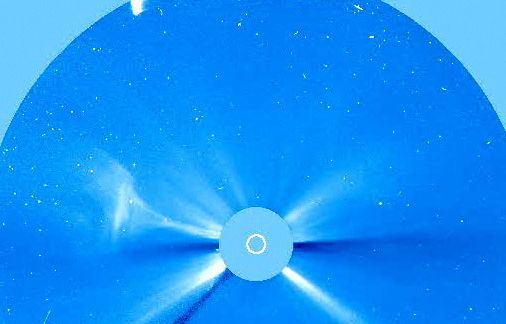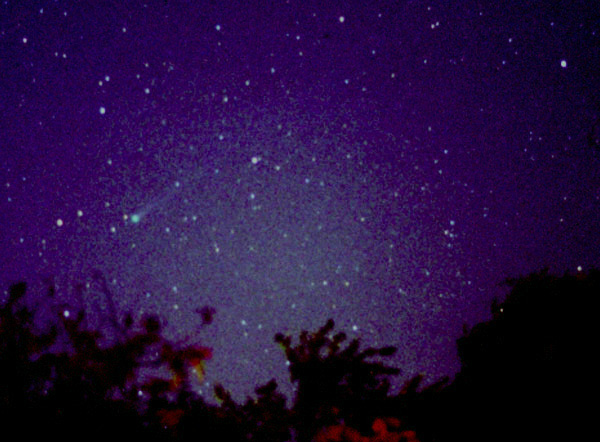COMET IMAGE GALLERY (comets 1-400)
page 3












|
COMET IMAGE GALLERY (comets 1-400)
page 3 |
||||||||||||||||||||||||||||||||
 |
||||||||||||||||||||||||||||||||
 |
||||||||||||||||||||||||||||||||
| Comet Hyakutake C/1996 B2 (no. 212). This spectacular comet passed 0.102 AU from Earth on March 25, 1996, and exhibited the longest cometary tail I've ever seen (my longest measurement being 70 degrees, with some other observers recording even longer than that). Left: March 24-25, 1996 (night of closest approach). The stars in the Big Dipper's handle are just left of top center. Right: March 27, 1996. | ||||||||||||||||||||||||||||||||
 |
 |
|||||||||||||||||||||||||||||||
| Comet Hyakutake, continued. Left: March 27, 1996, when near the north celestial pole (Polaris is to the upper right of the comet's head). Right: April 16, 1996. | ||||||||||||||||||||||||||||||||
 |
||||||||||||||||||||||||||||||||
 |
||||||||||||||||||||||||||||||||
| Left: Comet 29P/Schwassmann-Wachmann 1 (no. 226). This comet travels in a near-circular orbit between Jupiter and Saturn and undergoes occasional outbursts (usually two or three per year) when it reaches 12th or 13th magnitude (even brighter every once in a while). I began monitoring this comet for outbursts in early 1981, and to date have seen almost three dozen of them. These span three "returns," where a "return" is defined as aphelion to aphelion. The comet was at aphelion in early 1997 and I picked it up in outburst shortly thereafter; it passed perihelion in July 2004 and will be at aphelion again in late 2011. This CCD image was taken on June 16, 2002, when the comet was 12th magnitude and a little over a week after the beginning of a new outburst. The image shows a coma extension that hints of a spiral shape that the comet sometimes exhibits when in an outburst state. Right: Comet SOHO C/1998 J1 (no. 242), on May 25, 1998, from near Narrabri, New South Wales. The comet is above and slightly to the left of Orion's belt (which appears almost vertical in this perspective). | ||||||||||||||||||||||||||||||||
 |
||||||||||||||||||||||||||||||||
 |
||||||||||||||||||||||||||||||||
| LASCO C3 coronagraph images of Comets Hyakutake (left) on May 4, 1996 and SOHO (right) on May 7, 1998 (near top left). Courtesy NASA and ESA. | ||||||||||||||||||||||||||||||||
 |
||||||||||||||||||||||||||||||||
 |
||||||||||||||||||||||||||||||||
| Left: Comet LINEAR C/1999 T2 (no. 278) on August 21, 2000. This was the first comet successfully imaged by the Institute's CCD imaging system. Right: Comet LINEAR C/2000 K2 (no. 282), on September 19, 2000, a few days before I first viewed it visually. Only slightly brighter than 15th magnitude, this is one of the faintest comets I have ever detected visually, and I probably would not have been able to do so without the aid of the CCD system. | ||||||||||||||||||||||||||||||||
 |
||||||||||||||||||||||||||||||||
 |
||||||||||||||||||||||||||||||||
| Comet LINEAR C/2001 A2 (no. 290), a moderately bright naked-eye comet that appeared during the summer of 2001. | ||||||||||||||||||||||||||||||||
| Left: CCD image obtained on March 23, 2001, a few days after I had first observed it visually. Right: photograph taken June 16, 2001, from Harare, Zimbabwe, where I had traveled to view a total solar eclipse. | ||||||||||||||||||||||||||||||||
| Previous 1 2 3 4 5 Next | ||||||||||||||||||||||||||||||||
| Return to main comets page | ||||||||||||||||||||||||||||||||